 ~by Amanda Smith I have always intuitively been aware of writing seasons throughout a year. Some months are naturally filled with demanding family or work commitments, while others provide more writing time. Throughout the years, I have tried to wrangle the seasons, to ignore natural rhythms, in order to be consistently productive each month. Seasons do not easily conform to human whim. Anyone who has spent a year in New England knows one can cry, and cajole, and yell at March to be springy until the cows come home, but lovely weather does not arrive until mid-April. Similarly, writers can plan and plot and highlight and set timers, but life’s seasons continue to roll one into the other undeterred by our best organization. So what is a writer to do? Jerry Spinelli famously advised to “write in the cracks,” which I used to embrace with weed-like ferocity. I tried to force my writing into every possible crack, exhausting myself and probably frustrating my family. There were times when I literally ran back to my desk after tossing another load of laundry into the washer, not to waste “a crack” - yelling at March to be warm. I can’t say that was super productive. This year, I took on a new job that offered zero cracks. If allowed, this job would bleed into every tiny line like red lipstick on the wrinkly lips of my days and weeks and months. Don’t get me wrong, I love my job. But it’s a lot. Even in this tenacious job, the ever-present heartbeat of my writing seasons was present. So I listened. I paid attention. And when, at a 24 Carrot Writing meeting, Megan mentioned that summer traditionally is a slower writing time for her, I sat up. She also experiences writing seasons? Curiosity overcame me. What really, are my seasons? I pulled out my trusty bullet journals of the last four years and ran some stats. And here is what I learned, regardless of my career change. For me, January, February, and November are my most productive writing months (hello winter)! The summer months have their own rhythm, but are a close second, while, surprisingly April, and December are not too far behind. However, like clockwork, writing grinds to an alarming halt every March (maybe it’s all that yelling at the cold!) and May. “How is this information useful?” you ask. Knowing my natural writing seasons helps me embrace them rather than fight them, and that brings contentment to my writing schedule. When setting yearly goals, understanding writing seasons helps me plan big tasks for the predictably productive months. It allows me to be kind to myself during the months that are clearly already stacked with other responsibilities. Rolling with the seasons also helps prevent burn-out. If you are a long-time 24 Carrot Writer, you probably have records of your achieved writing goals somewhere. I would like to invite you to browse your journals, and see if you can identify your writing seasons. Because just like nature needs to take a break from all its blooming and growing and producing and buzzing, sometimes life demands that the writer takes a rest. Through rest comes restoration. And even though progress is not visible in those off seasons, just like tree roots go deep and sap flows beneath the surface, your stories are being nourished, gaining strength, becoming ready to bloom when you reach your proverbial mid-April!
2 Comments
by Amanda Smith The first time I heard these words by St. Francis of Assisi, they lit me on fire. I couldn’t shake them from my head. I planned my year’s writing goals around them, and I even wrote a blog in January of 2018 to spark some fire in you, dear reader. You may read it here, but the SparkNotes version is: Let’s do this! Let’s start with the necessary, then set goals for the possible, and in true Robert Browning fashion, let our “reach exceed our grasp” as we strive for those impossible dream-goals. Rah-rah!
During December 2023, as I did my yearly goal review and planning, I pondered the peg on which to hang my 2024 writing goal hat. St. Francis’ words fizzled somewhere deep in the synapses of my long-term memory. I pushed down that thought. “Now listen here, St. Francis,” I told the holy friar from Assisi, “life looks different than it did in thirteenth century Italy. It even looks different than it did in 2018.” Back then I had two boys in elementary and middle school. My stay-at-home mornings were mostly my own. Back then I could easily accomplish the necessary, reach past the possible, and plan for the impossible. But this is 2024. After eighteen years at home, I’ve been given the opportunity to return to the classroom and finally teach what I’ve always wanted to: High School Literature and Composition. Even though it is fulfilling and exciting, it certainly leaves little head-space for doing beyond what is urgent. I also have a husband who works from home, a college kid on a completely different schedule than the rest of us, and a high schooler that wants to do EVERYTHING. Post-pandemic 2024-me is telling 2018-me, “Girl, take a chill pill.” But the old saint is relentless: “Start by doing what is necessary…” he whispers. As I stare at the fresh new-year page of my beloved bullet journal, I calm my inner-skeptic and make space for his words. And would you know it? St. Francis’ wisdom hits differently than it did way back then: The wonder of doing the necessary, is that the unnecessary gets stripped away. We’ve all established goals and routines throughout the years of building our careers, but somehow, mine had become a heavy list of expectations that weighed me down and plucked the wings of my dreams. Do I need to track all my reading in two places? Do I need to persist in a monthly querying practice that gobbles up precious writing time, proves ineffective, and sucks the joy out of creating or is there a more sensible way? Do I really need to plot my writing life months ahead, or is it okay to just draw pencil hearts in my journal on the days that might likely offer an hour or two of writing? In the beginning of this new year, it is worth asking yourself whether your writing routines and goals still serve you and to strip away the excess until only the necessary remains. Now, if you are in the place where I was six years ago, where you can Robert Browning it, go for it. Please do. “Or what is a heaven for?” But even then, add some St. Francis frugality to your writing goals. What is truly necessary? To write. Let’s start there. The prophet Zechariah said, “Do not despise the day of small beginnings.” Small beginnings. One foot in front of the other. Write. And then do the next thing. “Start,” St. Francis said. That’s it. Just start.  Guest blog by Nancy Tupper Ling Here’s the thing. If we knew all the twists and turns of this writing journey at the start, many of us might opt out early on. It’s definitely not for the faint of heart. Sometimes in the midst of this journey, a leap of faith is required. We might decide to pivot, try a new genre, or join a different critique group. According to the Cambridge Dictionary, a leap of faith is “an act of believing something that is not easily believed.” On this road to publication, we are all taking a hop, a leap, or a gigantic jump in an effort to see our words in a reader’s hands someday. In the case of picture books, we might be praying for beautiful illustrations as well. Recently I took a literal leap of faith . . . toward my faith. It was risky. I’ve always included some aspect of my faith in my books, even if it’s simply the Latin phrase Soli Deo Gloria in my dedication, as composers Johann Sebastian Bach and George Frideric Handel did long ago. Simply put, the “glory goes to God alone.” In the last few years, however, I had a desire to submit anthologies and picture books that were more faith-centric. This meant taking a new road to publication, including joining with agent, Anne Marie O’Farrell, who believed there was a market for these books. Thankfully, she soon met Bunmi, Ishola, an awesome editor from Penguin/WaterBrook, who was in search of manuscripts with God at their heart. Turns out ONE PERFECT PLAN: THE BIBLE'S BIG STORY IN TINY POEMS was a good fit. Of course, none of this happened instantaneously. A lot of side streets were taken on this journey, and soul-searching as well. Certainly, I learned a great deal about myself and my priorities along the way. In case these tips might help you make a leap or two in your own writing career, I offer a few to consider: Heart and Soul If you do nothing else, take time to think about what makes your heart beat, and what stirs your soul. When you think about it, we’re all writing for someone. Who are you picturing reading your future book? What topic or idea won’t let you rest if you don’t write it? The idea for ONE PERFECT PLAN sat in a drawer for a long time. Really, a LONG time (since 2007). Still, the idea kept coming back, giving me a tap on the shoulder. It began with the premise that one event, one promise, or one person can make a huge difference in this world. Plus, I wanted to tell epic Bible stories in short poems so children might memorize them, and also read the entire Bible (its essence) in one sitting. That idea stirred my soul. What stirs yours? 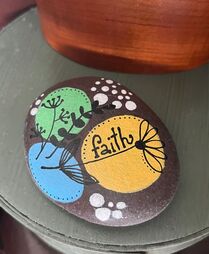 Mentors We hear a lot about reading mentor texts, or finding comparative stories, but who are the authors out in the world whom we admire most? Who’s already taken that leap of faith and is writing those stories that reflect their passion and purpose. For me, it was authors who weave their faith into their stories and their lives, mentors like Nikki Grimes and Mitali Perkins. I’ve also learned that traveling this road with a book buddy or two is key, like Janet Costa Bates and Lynda Mullaly Hunt, to name a few. As long as you’re open to learning more about this field of writing, you’ll surely find a mentor to guide you along the way. Who do you admire? Post-Its & More We all need a word of encouragement, or two or three, in this publishing business. The question is: Who are you listening to? Many times after a number of rejections or revisions, it’s hard to keep on writing. It’s hard not to hear those negative voices. So I’ve taken to posting a lot of sticky notes on my bathroom mirror, in my car, and on my laptop. They are hope-filled. I even leave some for my husband and daughters now and then. Sometimes it’s a Bible verse, like this one: "Now faith is the assurance of things hoped for, the conviction of things not seen" (Hebrews 11:1) Or, it could be as simple as “You’ve Got This!” And you can never go wrong with a Mary Oliver quote like: “I want to think again of dangerous and noble things. I want to be light and frolicsome. I want to be improbable, beautiful and afraid of nothing, as though I had wings.” And when you run out of encouraging words, there are times when a friend gifts you a Kindness Rock with just the right words on it to inspire you. Think about the gifts you’ve received.  Storing Up Treasures Even beyond the inspiring words, I like to collect tangible objects that remind me of my stories. When I look at these treasures, it helps me to feel a sense of reassurance that someday the manuscripts they represent might become books. Long before DOUBLE HAPPINESS was accepted by Chronicle Books, I discovered a sweet pencil box in an antique shop that had the phoenix and the dragon painted on the cover. In Chinese tradition, this represents double happiness (usually at weddings). That box sat on my writing desk for years, reminding me of my dream for that book. Even now, I have one story that has yet to be accepted with a hedgehog character named Phoebe. Trust me, this little fluffy hedgehog gives me hope that Phoebe may grow into something more someday. Sometimes it’s the littlest things that keep us inspired and maintain our faith. Generosity This has been my mantra: “It’s a long journey to publication. Yes, it can take a leap or two of faith, but all along the way practice the art of generosity.” Even now I need to be remind myself of this goal. I’ve become a stronger writer in spite of or because of the mistakes I’ve made along the way, and I want to encourage others that getting a book published is possible. One of my favorite poetry teachers was a quiet, soul-filled man named Donald Sheehan who ran the Frost Festival in Franconia, NH, for many summers. Daily, he reminded the participants that while we might be desiring to break into the world of publishing more than anything in the world, if we’re unable to have a kind and generous spirit along the way, we’re missing the essence of the journey. I couldn’t agree more. So, take heart, and practice some soul-searching. You may discover a sharp pivot is in your future, and it might be the very best move you will make for your writing career. Certainly, I thought this publishing journey would go a lot smoother and faster, but it gave me time to become brave enough to pursue a book that showcased a faith that’s important to me. Cultivate the art, but keep your eyes wide open for the gifts you’ve received already: In Mary Oliver’s words, “Sometimes I need only to stand wherever I am to be blessed.” 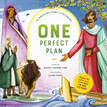 Nancy Tupper Ling is a children’s author, poet, book seller, and librarian. ONE PERFECT PLAN: THE BIBLE'S BIG STORY IN TINY POEMS (WaterBrook, 2023) is her 6th picture book, with two more on the way in 2024 including BLESS THE EARTH: A COLLECTION OF POETRY FOR CHILDREN TO CELEBRATE AND CARE FOR OUR WORLD (The Crown Publishing Group, 2024) which includes 24 Carrot Writing founder Amanda Smith’s poem, “Wonder,” and HEARTS IN MY POCKET. Nancy is also the author of THE STORY I'LL TELL (Lee & Low, 2015), DOUBLE HAPPINESS (Chronicle, 2015), THE YIN-YANG SISTERS AND THE DRAGON FRIGHTFUL (G.P. Putnam's Sons Books for Young Readers, 2018), MY SISTER, ALICIA MAY (Pleasant Street Press, 2009) and FOR EVERY LITTLE THING (Eerdmans Books for Young Readers, 2021) with co-author, June Cotner. To learn more, visit www.nancytupperling.com. Read our review of ONE PERFECT PLAN here. 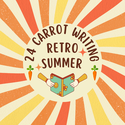 Puffy stickers on a Trapper Keeper, a smile glistening with strawberry Kissing Potion, and a pencil box filled with scratch-and-sniff markers, and you were off to a great start for the school year. But how do you restart your writing after a summer of listening to the Pretty in Pink soundtrack on your Walkman? This Back-to-School Retro Summer post has the perfect checklist. ~ by Amanda Smith September. The luggage is unpacked. The house is put back together. The kids are settled in their back-to-school routines. Which lends me to ask, in the words of our good friend Joey, As much as we itch to get back to writing, finding our groove after the summer can be challenging. Here are a few strategies that help me focus my writing for the last quarter of the year.
Do you belong to a critique group or book discussion group? Often these groups take a hiatus over Summer. Don’t forget to press reset and get back to your normal routines. When I was a kid I used to hate the “back to school” commercials that appeared on TV mid-vacation. We used to say “back to jail” or “back into the cage.” Now I view this time of year differently. I love the excitement of new teachers and learning. I appreciate routines clicking into place, like the gears of a well-oiled machine. And I enjoy the quiet house and increased productivity that it brings. This fall, may you find your desk, reset your schedule, go back to school, and set aggressive goals to finish the year strong!  During the dog-days of summer we are time-traveling back to elementary art class. Grab your Crayola Caddy, draw Harry, and while you are adding Pound Puppy features, consider your story's structure and details, just like my first graders taught me back in 2018. 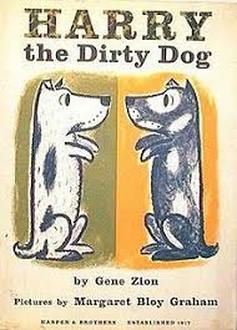 ~ by Amanda Smith As a substitute teacher I often walk into an emergency, with lesson plans drawn up quickly by someone whose mind was in a much more urgent place. On one such a day, the art teacher left me, in her words, “sketchy plans” – most of which involved students finishing current projects followed by open studio. Now, I’m all for open studio and free draw, but first grade had no projects to finish first. That meant 45 minutes of free draw: The definition of chaos. Thankfully, I had a planning period. And an ally in the school librarian. After thinking for a second or two, she pulled Harry the Dirty Dog by Gene Zion off her shelf. “You know,” she said, “kids love dogs. And they always enjoy Harry’s adventures.” Together we studied Margaret Bloy Graham’s illustrations, and a lesson plan was born. Fast forward to the first-grade class. I read the book. The kids were delighted. Then I held up Harry the Dirty Dog. “We are going to draw Harry,” I said. Shock and mayhem. “What!” “We can’t draw like that!” “That’s impossible.” I turned a deaf ear to the protests as I handed out a sheet of paper with a rectangle already drawn on it. I explained that we would have to work together to draw Harry, as it is a step by step process. Then the students and I drew Harry using the parameters of a rectangle. As their dog drawings took shape, their joy was contagious. And here’s the thing: even though they all followed my instructions, not one of the dogs looked the same. We had skinny, long nosed dachshunds, and pudgy, round nosed puppies. We had droopy eared dogs and shaggy tailed dogs. Boy Harrys with spiky collars and girl Harrys with pink bows. Every student loved their own Harry, and was amazed that they could indeed draw like that.
Here’s what I learned by drawing Harry, and how it pertains to writing:
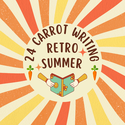 This week's throwback blog was first posted in 2018. This rad post recognizes that you may be looking to catch a wave this summer, but offers tips to make sure your don't wipeout on those writing goals! Enjoy as our RETRO SUMMER continues!  By Annie Cronin Romano Summer is here. It’s a time for sun, sand, and sangria! A time for hanging out with friends and family, relaxing vacations, and outdoor fun. So, my fine writer friends, where does your writing fit into the summertime equation? Because, as most of us know, summer is also notoriously known as a time for slacking. Don’t be a slacker, my writer friends! This is where those writing goals come in handy. Hopefully you included that “forgiveness clause” into your writing goals (see Set Your Writing Goals With a Little Forgiveness, 1/23/18). But if you didn’t, or if you haven’t set your summer writing goals yet, here are some tips for keeping the ink flowing while enjoying this active time of year. Tip #1. Going on vacation? Take a journal with you and write in it daily. It doesn’t have to be long. Just a few reflections on your day, or perhaps a description of a scene that you don’t want to forget. Maybe you came up with some story ideas. Jot them down. Keep your writer’s mind active even when you’re not working on an actual story. Tip #2. Read! What better way to become a better writer than to read consistently. Writers hear it all the time and, naturally, love books, so there’s a good chance you read regularly anyway. But in case time is more elusive for you the rest of the year, take some time this summer to crack the spine on a few books you’ve been wanting to dive into. You may notice some new writing approaches or styles along the way. Tip #3. Use your phone’s note-taking app. Even if you don’t have time to do much extended writing, sparks of inspiration may strike, and you probably won't have your laptop or notebook available if you’re at the amusement park or on a hike. So pull out your phone and type yourself a brief note. Store that idea or inspiration away for another time. Tip #4. Take pictures, especially of unusual things. Vacations are full of picture taking opportunities, but step away from the selfies and snapshots of family, and take some random “slice of life” shots. Then use those images later as writing prompts. I know. Brilliant, right? You never know what the lens will capture. Your next story gem could lurk in those precious photos! Tip #5. Enjoy! After all…it’s summer! Happy writing! ~Annie Dear 24 Carrot Writer,
This year you were brave! Oh, you know it. You sent out queries, (so many queries) signed with an agent, acquired an editor, launched a book received glowing reviews- and a few tough ones. You were brave! You were brave! Even if you didn’t query, sign, sell, launch because you slogged on You wrote words You wove stories You learned something new Revised something old Created something better You were brave! Own it. This Holiday Season, may you celebrate grit, encounter hope, and gather courage to step boldly into the new year. Warmest wishes, Amanda and the 24 Carrot Crew  ~by Amanda Smith There are few things at 24 Carrot Writing that thrills us as much as celebrating one of our own. Even though Megan is a recent addition to the 24 Carrot team, joining us in 2021 as a regular contributor, she has been “one of our own,” for a long time. I first met Megan at a critique group organized through the Writers’ Loft. Soon after, I ran into her at the NESCBWI Spring Conference, and later that year we both attended a picture book workshop together. Somehow, during that time frame, each one of the original 24 Carrot founders’ paths crossed with Megan’s at different events, and the following year we all carpooled together to the Spring Conference. Those daily drives back and forth were filled with engaging conversations about writing, and workshops, and dreams. Megan had just signed with her agent, Lindsay Davis Auld from Writers House, and we were excitedly crossing all our fingers and toes for her. And here we are – four years later, celebrating the bright light of Megan’s debut picture book Twinkle, Twinkle, Winter Night (Clarion Books) illustrated by Nneka Myers! Over the years we have learned many lessons from Megan's approach to writing and her work philosophy. We'd love to share some of those with you. 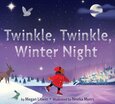 LESSONS WE'VE LEAREND FROM MEGAN: Be Gracious: At that very first critique group, one of those serendipitous, hive-mind, similarly-themed-story flukes popped up. In the past, I’ve witnessed these kinds of situations ruin writerly relationships, but Megan responded with so much grace and this-is-the-business professionalism that it was hardly a blip on the radar. Over the years we’ve witnessed her kind support to the writing community, her willingness to jump in and help at book events, her praise and appreciation for other writers, and as a critique partner, her thoughtful insight and cheerleading of our writing – always with a generous dose of Megan sparkle. Follow Your Passions: Before focusing on writing, Megan was a classroom teacher and reading interventionist. Literacy accessibility is one of her biggest passions. She doesn’t just love writing. She loves books, and reading, and kids reading books, and reading books to kids, and making reading available to all. This passion is sprinkled, like star-dust, onto everything she does, her audience always in her mind. Not only does it drive her to write beautifully lyrical picture books, but also to explore other ways of breaking open the written word to children, such as writing for the educational market, classroom poetry, and early readers. As a matter of fact, Megan has the first two books of an early reader series Dirt and Bugsy launching in February and June 2023. Following her passion has led her to all kinds of exhilarating opportunities. Trust the Process: The publishing process is long. Very long. Excruciatingly long. Megan signed with her agent in June 2018, and went out on submission later that same month. With a different manuscript. Twinkle, Twinkle, Winter Night was actually her second submission, and between the two, there were two years of ups and downs, very close-calls, and plenty of rejection before signing that contract in 2020. There are so many anxiety-causing stepping stones on the path to publishing, yet Megan trusted her team and her talent, and stayed the course, one step at a time. Own Your Style: When we browse bookstores or share library finds, often one of us will pull a book and announce, “This is a Megan-book.” Megan-books feature lovely language, read-aloud-ability, solid rhythm, winks of humor, and oodles of heart. While the style might be recognizable, her voice is uniquely hers. When it comes to writing picture books, Megan is a lyrical writer. She knows it. She owns it. And she excels at it. We are so excited that we can now pull an actual, very real, totally authentic Megan-book from the shelves. One with her name on the cover! Readers, you and your little ones will fall in love with Megan’s tight writing, her poetic phrasing, and her lilting diction in Twinkle, Twinkle, Winter Night! Dear Megan, we are so excited for you! Shine bright! 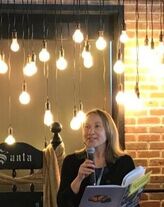 Bio: Megan Litwin is a children’s book author, a former classroom teacher, and a forever believer in book magic. She holds a Master of Arts in Children’s Literature from Simmons University and lives in Massachusetts with her family. She will launch Twinkle, Twinkle, Winter Night Friday, September 23 at 6 pm under the twinkly lights of The Unlikely Story. Click here for more information on this event and other upcoming bookstore visits. Ask for Twinkle, Twinkle, Winter Night at your local bookstore or order here. ~ Having an agent isn’t everything Soft Watch at the Moment of First Explosion by Salvador Dali. Soft Watch at the Moment of First Explosion by Salvador Dali. ~ Guest blog by Samantha Gassman In January 2020, I was flying high. After 5 months of querying literary agents with my picture book manuscripts, I had an offer of representation in hand and my first book on submission with publishers. But as the months dragged on, it became clear that my hope of seeing my book in print was not going to happen. During the course of 12 months, my first manuscript was rejected by 30 publishing houses — big ones, small ones and everything in between. Here’s what I learned: 1. Rejection doesn’t stop after you have an agent When I received my first offer of representation, I was equal parts thrilled and relieved. I was ready to be out of the query trenches and into the big time! Instead, I traded in the “your work isn’t the right fit for me” rejections from agents for “It’s cute but I’m afraid it didn’t quite capture my attention as I was hoping. I’m afraid I’m going to have to pass” rejections from editors. Ouch! Not only do the rejections continue after landing an agent, publisher rejections sting even more. When I was querying agents, I convinced myself it was “just to see what would happen.” Like a schoolchild picking daisy petals: maybe they’d like me, maybe they wouldn’t. But when a publisher rejects your work, they’re saying it’s not worth their time or money to publish your story. On that note... 2. Acquiring a book is a risk When a publisher acquires a book, particularly a picture book, the publisher is taking a huge risk on your book’s ability to compete and perform in an over-crowded marketplace. During the acquisition process, there will be a Profit and Loss (P&L) analysis performed by the editor or financial specialist. After all, publishing is a business, not a charity. While writing for children is often portrayed as a whimsical process, if your cute story isn’t worth the manufacturing, design or overhead costs, a publisher will pass. In my case, the feedback from several editors was exactly that: “The energy is great, but the story doesn’t hit high enough to compete in the market right now.” 3. Agents have a really tough job Agents get paid when the author gets paid. In other words, after your book is acquired, contracts are signed, advances are paid (or not) and royalties come in. Because publishing is such a slow industry, this means your poor agent doesn’t see any cash for 1–3 years AFTER they sell your book. They weren’t paid to read your query, offer their revisions, or go back and forth with you on edits. They do all of that in hopes that your book will be acquired by a publisher and fly off the shelves. Even then, most agent commissions are only 15–20%. On a $17 hardcover book, that’s only a few bucks. I will be forever grateful to my first literary agent for her perseverance and patience as we received rejection after rejection. Especially since our agreement was based on her representing this one manuscript, and she had all her figurative eggs in my one basket. 4. Taking a critical eye to your work is important If you remember nothing else from this post, remember this: Read your manuscript like a publisher. Regardless of what kind of book you’ve written, you must be well- read enough in your genre, age group, etc. to know where your book fits into the market. What is unique about your book? Why does there need to be another book on your topic? What value does it provide the reader? After the doors to my publishing dreams were closed for this manuscript, I re-read it with the editors’ comments in mind. You know what I found? They were right. ARTICHOKIE KARAOKE (great title, right?) is a really cute book. The rhyme style is catchy (similar to Hip Hop Lollipop) and kids would appreciate the premise of being stuck in a boring grocery store with nothing to do. But, as the 30 editors noted in their own way, it is too “slice of life.” The conflict and resolution are too tame, and without the rhyme, the story falls flat. Maybe if I had considered these things before, I could have revised it to be more compelling. Upped the stakes. Increased the friction. Landed the deal. Take a look at your story as objectively as possible and ask yourself those tough questions before it goes on submission. If you know in your heart it could be better, make it better. There is no need to rush. Seriously. Don’t rush it.  5. Keep trying Although my first attempt at being a published author didn't work out, I tried again with another agent in 2020. Just before my rainbow baby was born, my new agent and I received an offer of publication for my picture book, DEAR RAINBOW BABY. It comes out on National Rainbow Baby Day – August 22, 2022, courtesy of Clear Fork Publishing. P.S. It’s also my rainbow baby’s second birthday that day – how perfect is that!? After my first book was rejected by 30 publishers, I felt completely deflated. The contract with my first agent was terminated and even though there are still a handful of publishers who never responded, ARTICHOKIE KARAOKE will likely never be traditionally published. At least, not in its original form. Knowing what I know now, I may dust it off one day and revise it, and try again. Or maybe, elements of the story will find their way into a completely new piece. Or maybe, I’ll borrow the rhyme scheme to write a new story. It doesn’t matter — the point is, we learn more from our failures than our successes. Don’t give up!  Samantha Gassman is a children's book author, Air Force veteran, military spouse, and mom to two kids and two cats. She is the author of DEAR RAINBOW BABY (Aug 22, 2022) and PEANUT AND BUTTER CUP (2024). Visit Samantha’s website to learn more. Preorder DEAR RAINBOW BABY here.  by Amanda Smith One of the ladies in my ceramics class, let’s call her Dee, recently made a set of cat dishes for her friend, each dish featuring one letter of the cat’s name, Mozart. One fine day in class, we were all struggling. Like really struggling. Unable to center. Unable to throw. Exasperated, Dee left her wheel for the kiln room to check whether the set of dishes had been fired. She reappeared, holding four dishes that spelled Z-A-R-T. “We’ve lost Mo,” she said. “That’s what’s wrong. Our Mo-jo went missing.” And we were stuck with Zart. Let’s be real. The last couple of years had offered more than enough incentive for Mo to pack his inspirational bags and seek greener pastures. Some of us lost our creative Mo early on in the pandemic, while others had managed to hold on, tooth and nail, for longer. But I haven’t met a single creative over the last two years that hadn’t at some point felt stuck with Zart. Deflated. Incomplete. So what happened in the studio when we discovered the loss of Mo? Each of us dealt with the bad pottery spell differently. Dee is a power-through kind of person. She kept throwing. At the end of the three hours, she had four sloppy piles of clay drying on the plaster table – evidence of four collapsed pots. But she also had two lovely bowls. Peg decided to abandon the wheel for the day and instead focused on glazing some of her vessels that had been bisque-fired– a differently challenging skill, and a good change of pace. I turned my back on the blasted wheel and affixed handles to mugs that I had thrown and trimmed previously. On a whim, I decided to carve designs on the mugs. I got lost in the joy of line and form and measurable progress. The next open studio, Mo was still missing. Dee, Peg and I together decided to hand-build little cheese boards. Collectively we figured out the process, fine-tuned each other’s technique, got expert tips from our studio’s resident master hand-builder and made something pretty cute. Confidence somewhat restored, and bravery bolstered by mutual encouragement, we left the studio rejuvenated that day. So why am I sharing my ceramic woes with you, dear writer? Because, just like me, you might have lost your writing Mo. What to do until Mo returns?
Complete!
Along with the lost bowls, our Mo-jo returned. Did it have anything to do with those cat dishes? Likely not. Did it have everything to do with not giving up even when we felt like it? Absolutely. Keep writing, work on other writing related stuff, fill your well with the frivolous, and commiserate with co-writers. But don’t dare give up. Like a stray cat, Mo will return! (With special thanks to always inspirational DE and PC.) |
Peruse blogs for advice and tips from KidLit creatives.
Categories
All
Archives
April 2024
Click to set custom HTML
Click on the RSS Feed button above to receive notifications of new posts on this blog.
|
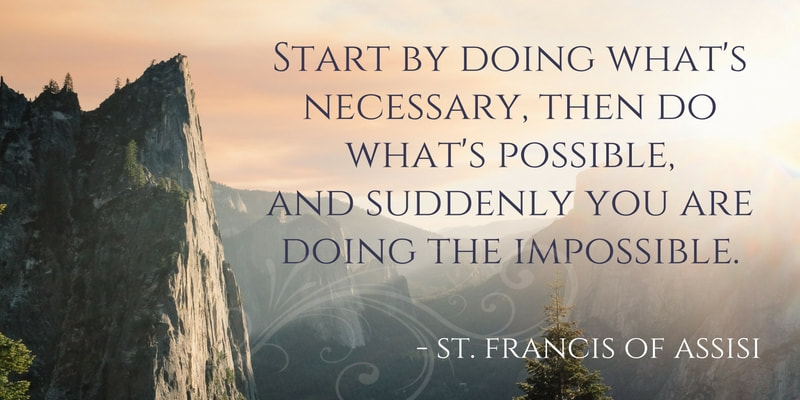
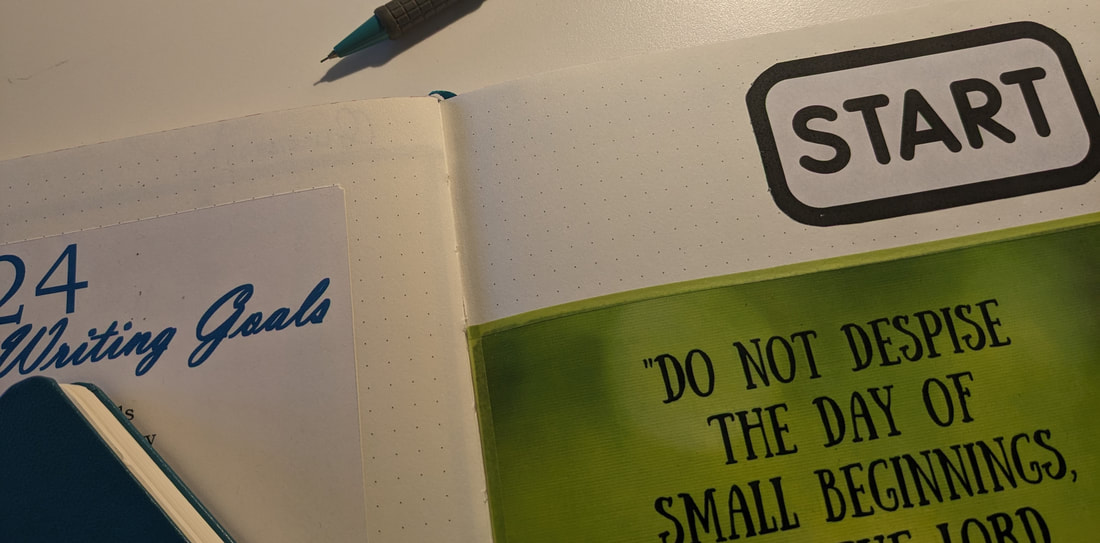
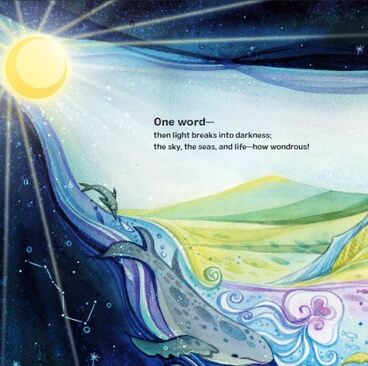

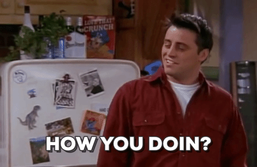
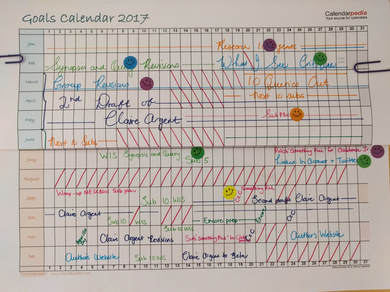
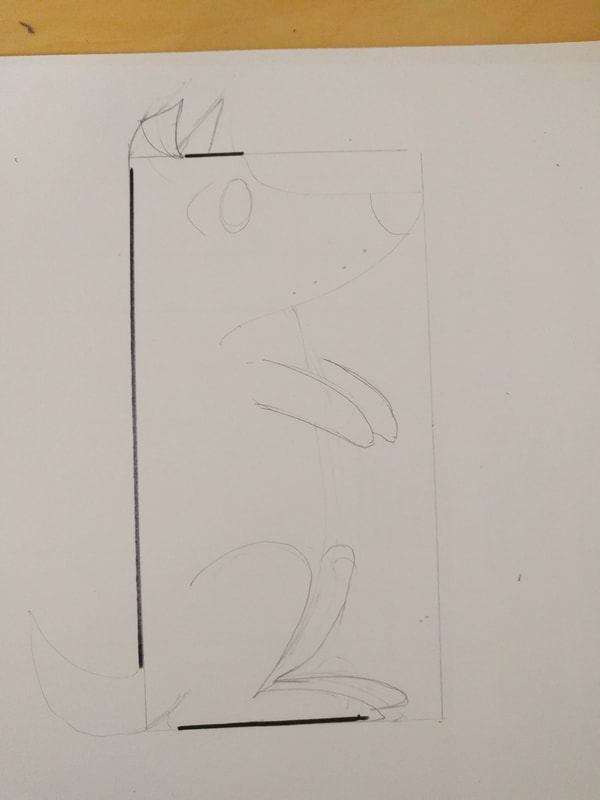
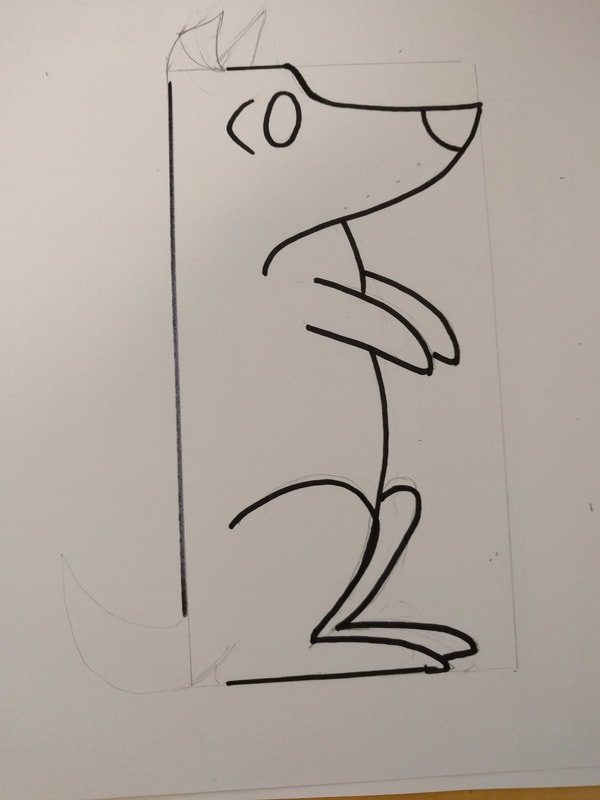
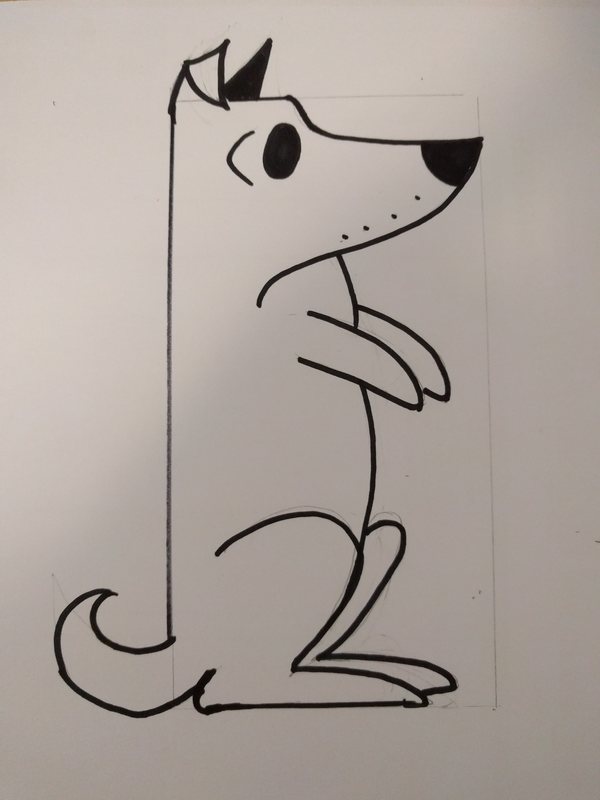

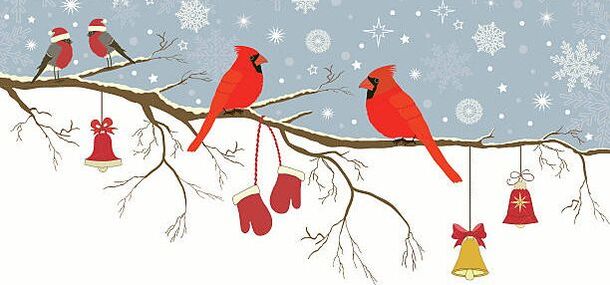

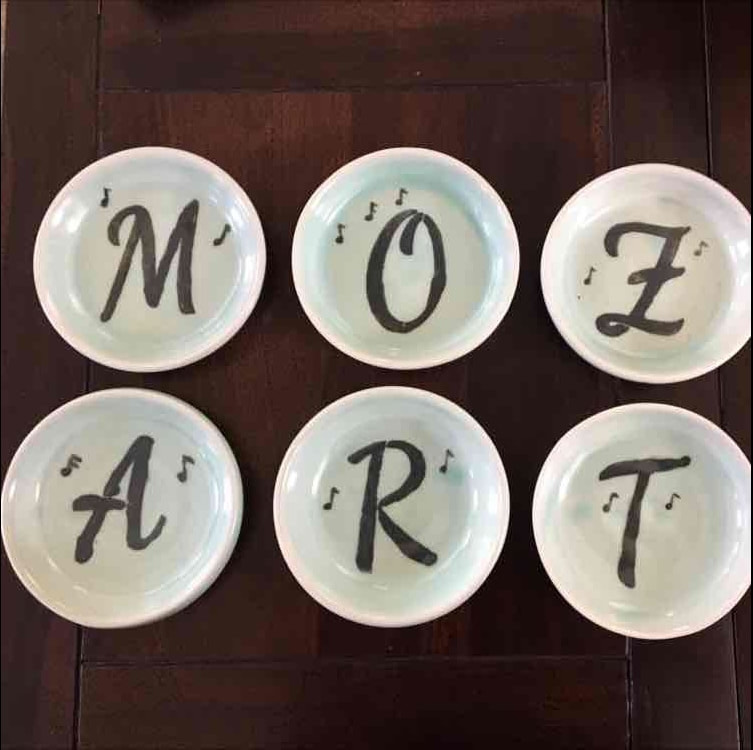
 RSS Feed
RSS Feed